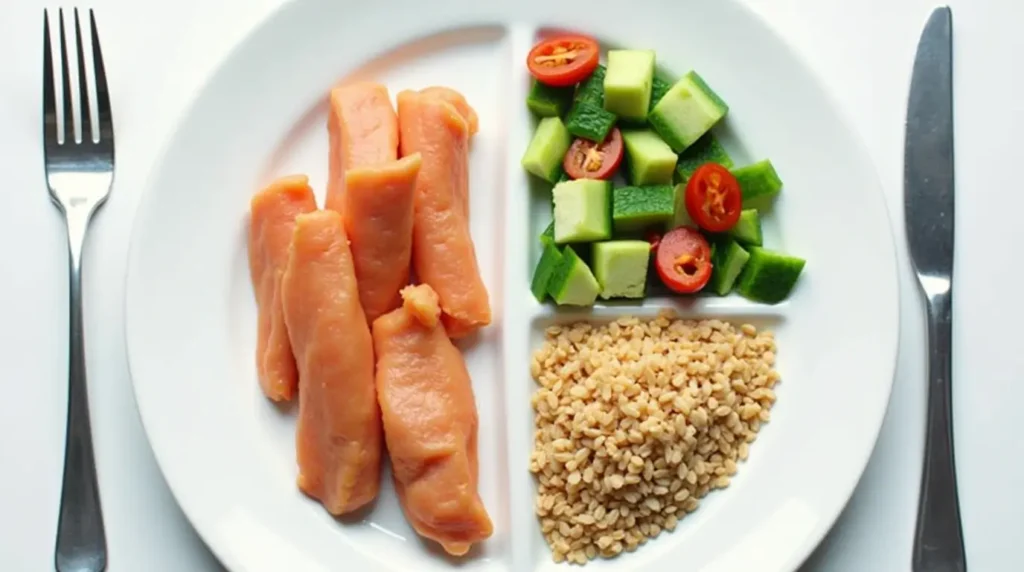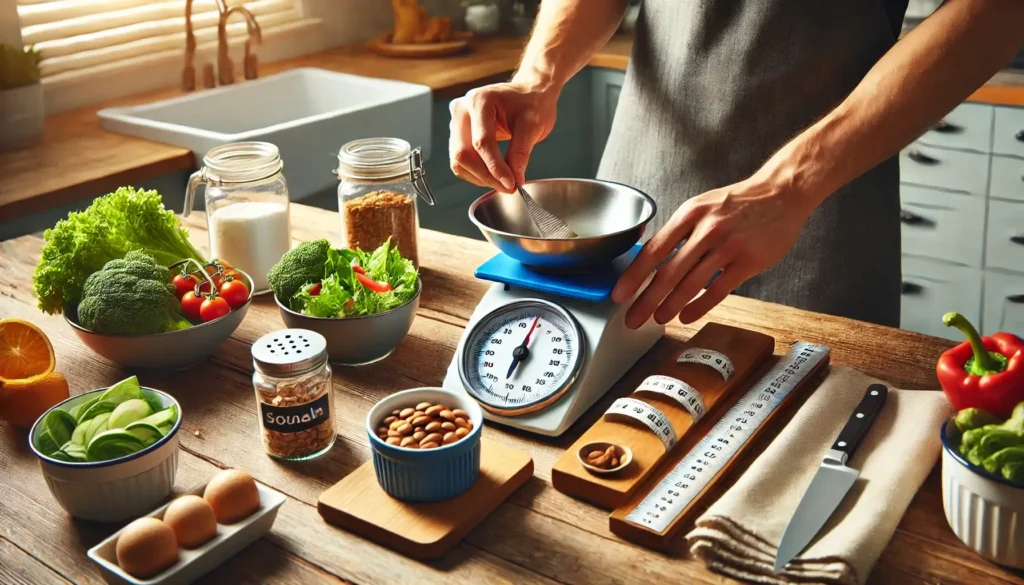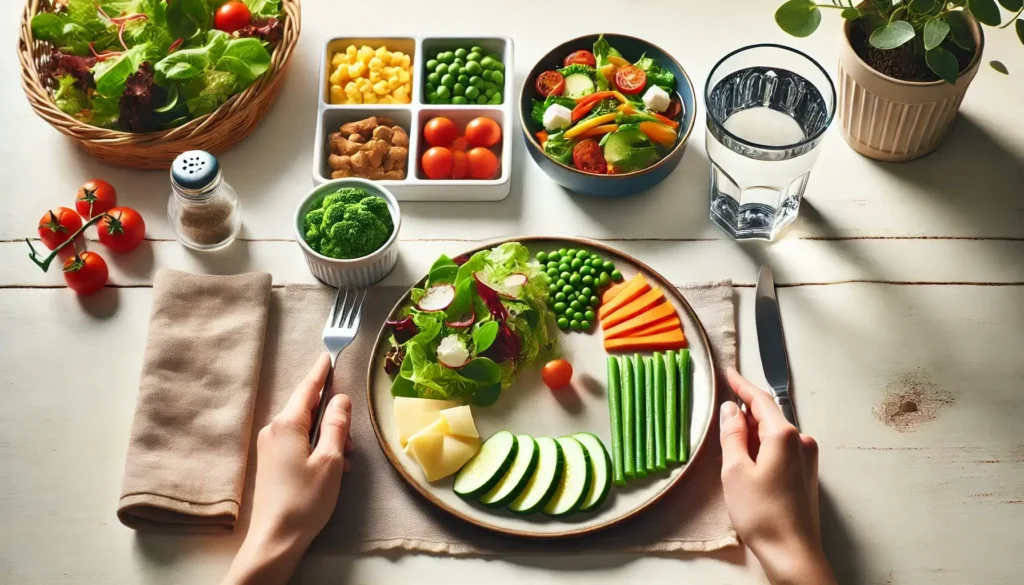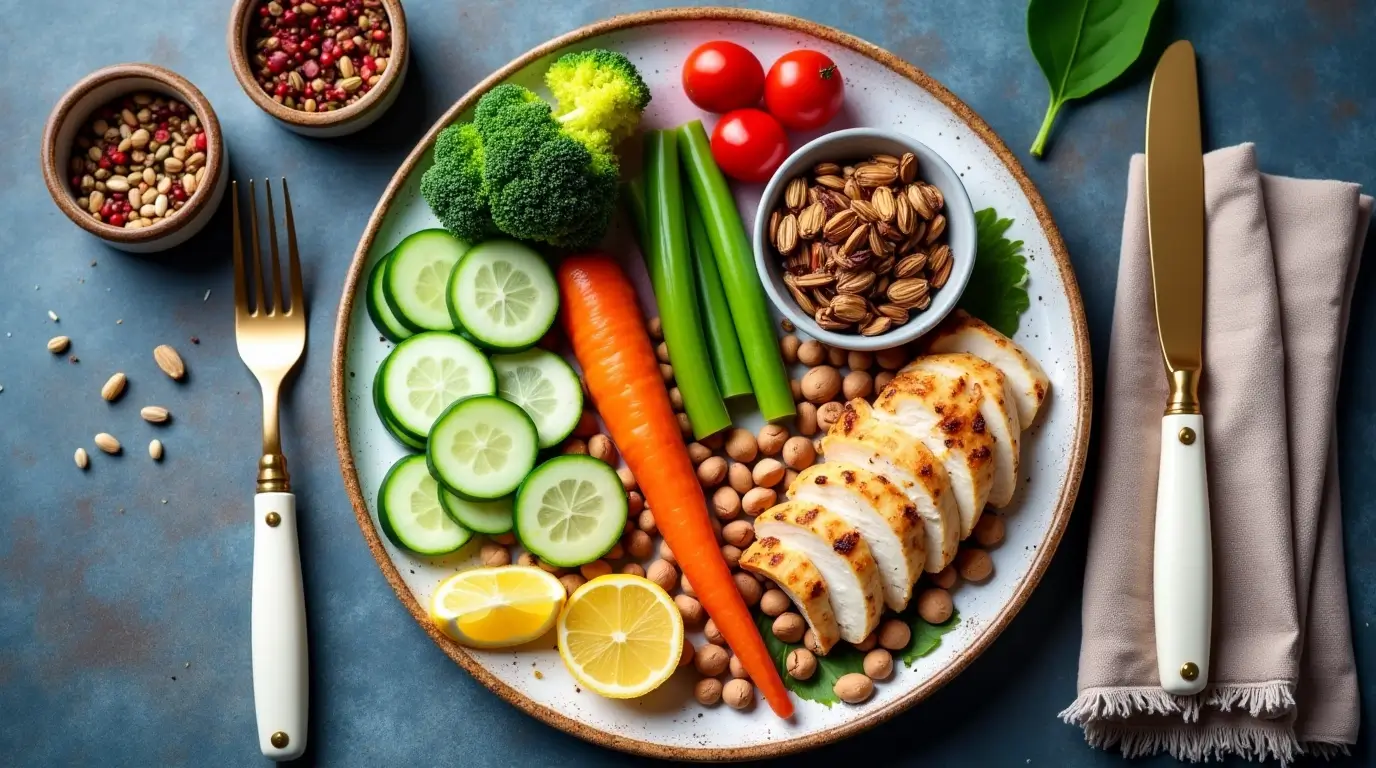The Secret to Effective Weight Loss Without Starving Yourself
We all know the frustration that comes with trying to lose weight. From trying out the latest fad diet to counting every calorie, it can sometimes feel like nothing works. If you’re tired of feeling restricted or overwhelmed by complex weight loss methods, you might be wondering: Can I lose weight just by portion control?
It turns out, the simple concept of controlling your portions might be the key to successful and sustainable weight loss. Portion control doesn’t involve drastic changes to your diet or depriving yourself of the foods you enjoy. Instead, it’s about striking the right balance and making smarter choices that support your weight loss goals.
In this article, we’ll break down how portion control works, why it’s effective, and how you can implement it in your daily life for real results. Whether you’re looking to lose a few pounds or maintain a healthy weight, portion control could be the game-changer you’ve been looking for.
What Is Portion Control?
Before diving into the benefits of portion control, it’s important to understand exactly what it is. At its core, this is the practice of managing the amount of food you consume during a meal or snack. But it’s not just about eating less; it’s about eating in a way that helps you balance calories and nutrients while avoiding overeating.
Understanding the Basics of Portion Control
To begin, it’s crucial to differentiate between portion size and serving size. A portion is the amount of food you choose to eat, while a serving size is the recommended amount, often indicated on food packaging or nutrition labels. For example, a portion might be a large bowl of pasta, but a serving size could be one cup, which is approximately 200 calories.
Portion control allows you to be more mindful of how much you’re eating without feeling the need to drastically reduce your food intake. By simply reducing the size of your portions, you can cut down on calories, which is a fundamental component of weight loss.
The Role of Portion Control in Weight Management
Weight management comes down to calories consumed versus calories burned. If you consume more calories than your body uses, you’ll gain weight. On the other hand, if you consume fewer calories than you burn, you’ll lose weight. Portion control helps you manage this balance by keeping your calorie intake in check.
When you practice portion control, you’re more likely to avoid overeating and snacking mindlessly, both of which can lead to excessive calorie consumption. This simple approach has been shown to have a positive impact on weight loss, especially when combined with other healthy habits.
How Portion Control Relates to Mindful Eating
Mindful eating is all about paying attention to what and how much you’re eating, and portion control is a big part of that. By focusing on portion sizes and eating slowly, you give your brain time to signal that you’re full, helping you avoid overeating.
Mindful eating encourages you to appreciate your food, rather than rushing through meals. This not only makes eating more enjoyable but also helps prevent mindless snacking that often leads to excess calories.

How Portion Control Helps in Weight Loss
So, can portion control alone help you lose weight? The answer is yes, but like anything, it’s most effective when used alongside other healthy habits like regular exercise.
Portion Control Allows You to Eat the Foods You Love
One of the biggest challenges people face when trying to lose weight is the idea of giving up their favorite foods. With portion control, you don’t have to cut out anything you love. Instead, you learn how to enjoy those foods in moderation.
For example, if you’re a pizza lover, you don’t have to skip it entirely. Instead, you can enjoy a small portion, paired with a salad to make the meal more filling and balanced. Portion control lets you savor your meals without the guilt.
Reducing Calorie Intake Without Feeling Deprived
When you control portions, you reduce the total amount of calories you consume in a day, which is essential for weight loss. The great thing about portion control is that it doesn’t require you to starve yourself or feel deprived. It’s about adjusting how much you eat so that your body still gets the nutrition it needs, but without the excess.
By simply making sure your meals are appropriately sized, you naturally cut back on the calories that contribute to weight gain. This can lead to gradual, sustainable weight loss over time.

Research Supporting Portion Control for Weight Loss
Numerous studies have shown that portion control is an effective tool for weight loss. According to research published in the American Journal of Clinical Nutrition, people who used portion control methods were able to reduce their calorie intake and lose weight without feeling deprived.
Studies also indicate that eating smaller portions more frequently throughout the day can help regulate metabolism and stabilize blood sugar levels, further supporting weight loss efforts.
How to Implement Portion Control in Your Daily Life
Now that you understand the benefits of portion control, how do you apply it to your daily life? Here are some simple strategies you can start using today.
Simple Techniques to Control Your Portions
1. Use Smaller Plates
One of the easiest ways to control your portions is by using smaller plates. The visual cue of a full plate tricks your brain into thinking you’ve eaten a large meal, even if the actual portion is smaller. Studies have shown that people who eat from smaller plates tend to consume fewer calories without even realizing it.
2. Measure Your Food
While it’s not always practical to measure every meal, using measuring cups or a food scale can be a great way to ensure that you’re eating the right portion sizes, especially when it comes to calorie-dense foods like pasta or rice. Knowing what a standard portion looks like can help you keep your servings in check.
3. Practice the 20-Minute Rule
It takes about 20 minutes for your stomach to signal to your brain that you’re full. To avoid overeating, try slowing down and savoring your food. If you’re still hungry after 20 minutes, then you can go back for a small second helping. This strategy helps prevent overeating and lets you listen to your body’s hunger cues.
4. Avoid Eating Directly from the Package
When you eat straight from a package, it’s easy to lose track of how much you’ve consumed. Instead, portion out your snacks into small bowls or containers before eating. This keeps you from mindlessly munching and ensures you stick to your portion size.
Portion Control and Meal Planning
Planning your meals in advance is one of the best ways to keep your portion sizes under control. When you prepare your meals ahead of time, you’re less likely to be tempted by large portions or unhealthy choices.
Meal Planning for Portion Control
Meal planning allows you to decide in advance what you’ll be eating, so there’s no guesswork when it comes to portion sizes. This approach helps you avoid impulsive eating decisions that often lead to overeating. Additionally, preparing your meals in advance helps you control the ingredients and portion sizes, making it easier to stick to your goals.
A balanced meal plan should include:
- Proteins: Lean meats, tofu, or legumes.
- Vegetables: A variety of colorful, fiber-rich vegetables.
- Whole grains: Brown rice, quinoa, or oats.
- Healthy fats: Avocado, olive oil, nuts, and seeds.
When you prepare your meals with these foods in mind, you can control both the quality and the quantity of what you’re eating, making portion control even easier.

Can Portion Control Alone Help You Lose Weight?
While portion control is a powerful tool for weight loss, it’s most effective when combined with other healthy habits. Portion control alone might help you make progress, but if you’re looking for faster results or sustained weight management, pairing portion control with exercise and other healthy lifestyle habits will give you the best outcome.
Portion Control and Exercise: A Powerful Combination
Exercise plays a crucial role in weight loss. Regular physical activity increases the number of calories your body burns, helping you achieve a calorie deficit, which is essential for weight loss. Combining exercise with portion control can speed up the process and help you reach your goals more efficiently.
Additionally, strength training and cardio exercise can help build muscle, which increases your metabolism and makes it easier for you to maintain a healthy weight in the long run.
Portion Control Recipes: Easy and Healthy Meal Ideas
Incorporating portion control into your meals doesn’t mean you have to sacrifice flavor or enjoyment. Here are a few portion-controlled meal ideas to inspire your next meal prep session.
Sample Portion-Controlled Meal Recipes
1. Chicken Salad
Ingredients:
- 3 oz grilled chicken breast
- 1 cup mixed greens
- ¼ avocado
- 2 tbsp olive oil-based dressing
Portion Size: 1 serving
Calories per Serving: 350 calories
2. Quinoa Bowl
Ingredients:
- 1/2 cup cooked quinoa
- ¼ cup black beans
- ¼ cup corn
- ½ cup bell peppers, chopped
Portion Size: 1 serving
Calories per Serving: 400 calories
3. Grilled Salmon
Ingredients:
- 4 oz grilled salmon fillet
- 1 cup spinach sautéed in olive oil
- Lemon slices for garnish
Portion Size: 1 serving
Calories per Serving: 300 calories
Frequently Asked Questions About Portion Control
Can portion control really help me lose weight?
Yes, portion control helps by reducing your calorie intake without forcing you to drastically change your diet or eliminate foods. It’s a sustainable method that can be used over the long term.
How do I know the right portion size for weight loss?
Start by using measuring tools, reading food labels, and paying attention to recommended serving sizes. If you’re still unsure, a registered dietitian can provide personalized guidance.
Is portion control enough to lose weight without exercise?
While portion control is an important factor, combining it with regular exercise will likely lead to better results. Exercise helps increase your calorie burn, making it easier to achieve a calorie deficit.
Does portion control work for all foods?
Yes, portion control can be applied to almost all foods. However, it’s especially effective with higher-calorie foods or those that are easy to overeat, like chips, sweets, and fatty snacks.
How can I control my portion sizes when eating out?
When dining out, consider sharing dishes or asking for smaller portions. Many restaurants are willing to accommodate portion requests, so don’t hesitate to ask for sauces on the side or for your meal to be served in a smaller portion.
Conclusion
Portion control is a simple yet powerful method for achieving sustainable weight loss. By learning to control the amount of food you consume, you can still enjoy your favorite meals while cutting back on excess calories. While portion control alone may not offer instant results, it’s an essential part of any healthy weight loss plan. Paired with regular exercise and mindful eating, portion control can help you shed pounds and maintain a healthy lifestyle without the deprivation that comes with fad diets. Start practicing portion control today, and take control of your weight loss journey.
Ready to take the next step in your weight loss journey? Start by implementing portion control in your meals, and see how this simple change can make a big difference.

